
I know what you’re thinking. This gun review isn’t exactly…unbiased. In some ways, you’re right. We helped develop the MeatEater Edition of Weatherby’s new Model 307, and we think it’s pretty slick. (You can order one for yourself here.)
But there’s no such thing as the perfect rifle. Tradeoffs are part of every gun design, and selecting one feature over another offers drawbacks as well as benefits. A slim profile barrel, for example, is better for the backcountry but may not handle heat as well. A lightweight rifle is great until recoil from a large caliber slams into your shoulder, and while you’ll get stunning accuracy out of a handmade barrel, you’ll pay a pretty penny.
The Weatherby Model 307 is an excellent rifle, but it’s not the perfect rifle for every person and situation. In this review, we’ll stick to the facts and let you make that decision for yourself.
Why You Should Check Out the Model 307
Weatherby hasn’t come out with a new action in over 50 years. (If it ain’t broke, don’t fix it, etc., etc.) But the Weatherby team saw a need for a rifle that walked a middle road between the high-end Mark V and the entry-level Vanguard. They also wanted, as Weatherby’s Luke Thorkildsen put it, “a more open source action.”
“I was passionate about bringing a firearm to market that was more ‘firearms Legos.’ I love to tinker with products, and historically the Vanguard and Mark V are more of a closed system,” Thorkildsen said.
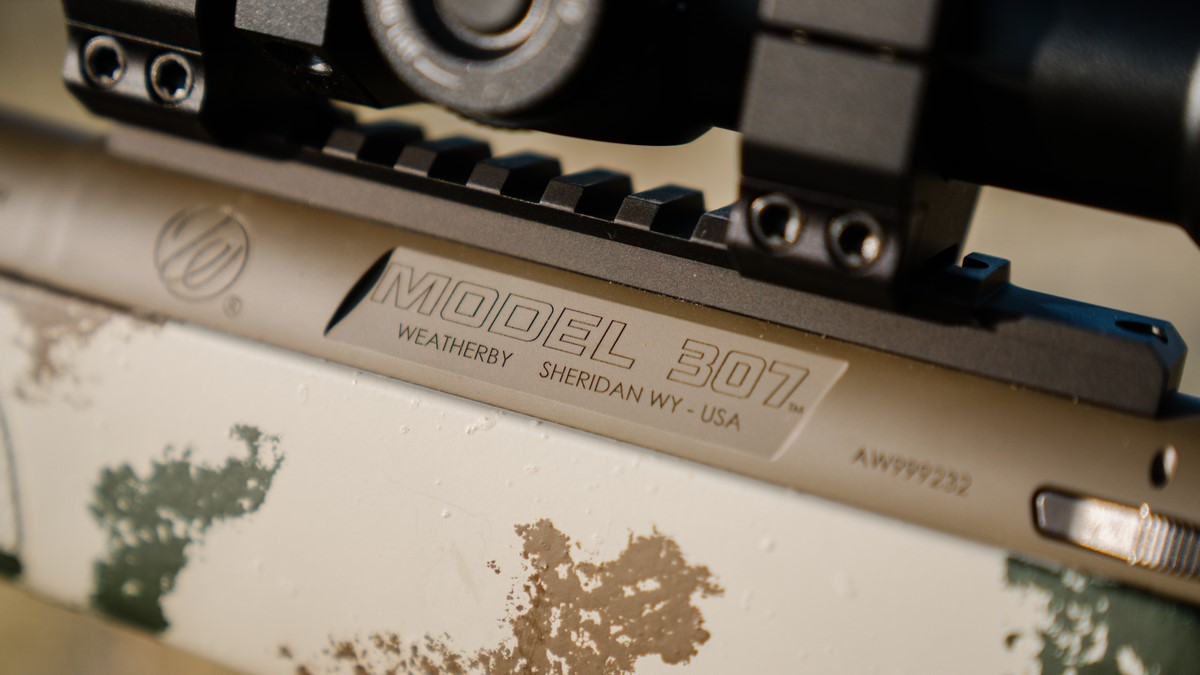
So, instead of developing an entirely new proprietary action, they built the Model 307 using a Remington 700 footprint. The Remington 700 is one of the most popular bolt guns ever made, and dozens of companies offer hundreds of aftermarket products for the legendary action. Most of those products will work on the Model 307–from barrels to stocks to triggers. If you don’t like something on your 307, you won’t have much trouble swapping it out.
But you may not want to. The MeatEater Edition 307 comes with some great features, including:
- Externally adjustable TriggerTech Field trigger
- Adjustable stock (cheek rise and length-of-pull)
- 2-Lug, fully cylindrical action
- Two-position safety
- Tool-less bolt disassembly
- M16-style extractor
- Removable magazine
- Peak picatinny rail
- Accubrake
- Threaded, fluted barrel
- Available In: 240 Wby Mag, 243 Win, 257 Wby Mag, 270 Win, 280 Ackley Improved, 30-06 Sprg, 300 Win, 6.5 Creedmoor, 6.5 Wby RPM, 7mm Rem, 7mm PRC
- Made in USA
“It’s right there in that custom gun world,” said MeatEater’s Ryan Callaghan. “If you want to go to new heights beyond that, it’s set up to do so. But out of the box…it’s a business rifle. You’re going to look at it and say, ‘Oh yeah, that thing means business.’ You’re going to hit the range with that type of confidence, and confidence kills.”
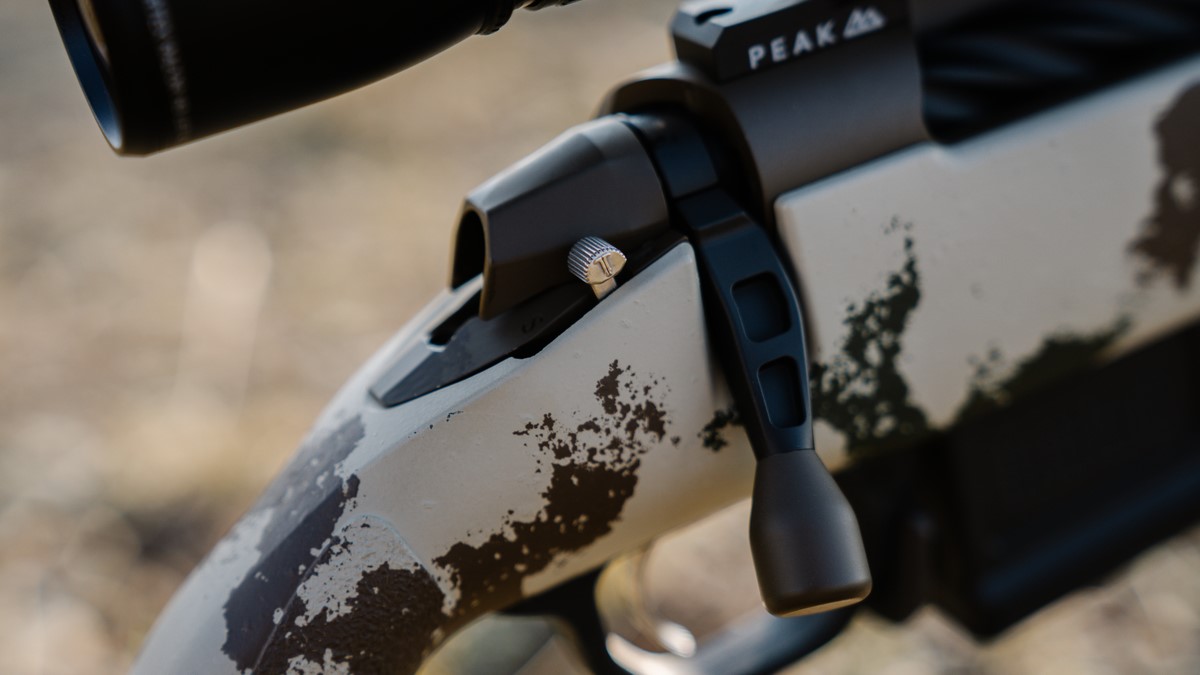
Plus, Weatherby makes it easy for everyone to bring home a little killer confidence of their own. Even though the 307 offers some of the same great features as Weatherby’s legendary Mark V, the price point is significantly lower. It’s not a bargain bin gun at $1,300, but it is, as Cal put it, “a value add.” In other words, you’re getting plenty of gun for the money.
Why the MeatEater 307 Might Not Be For You
While the Weatherby 307 is ready for the field out of the box, it’s not ideal for all competitive applications. You could set up a Weatherby 307 to be a competition gun (the builders action would be a great place to start), but the standard fluted barrel heats up quickly. I’ve found that even with balanced 6.5 Creedmoor loads, the barrel gets to be screaming hot after five or six rounds in succession. I didn’t notice any significant point-of-impact shifts, but a lightweight barrel isn’t ideal for a full day of competition.
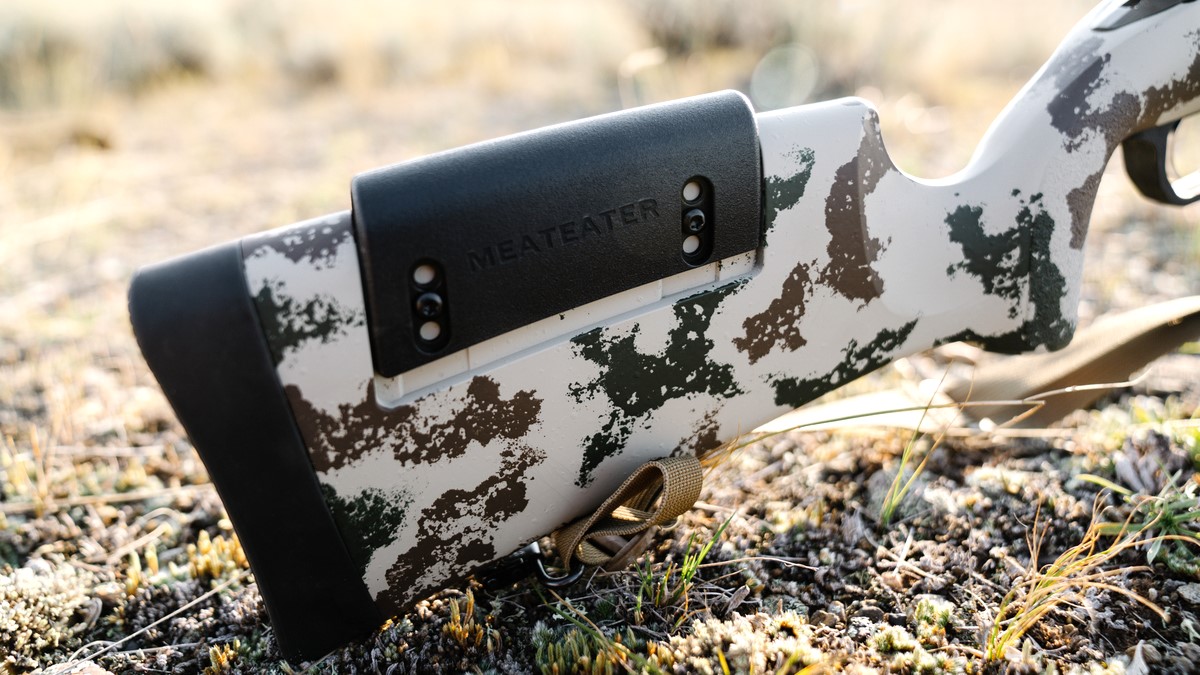
Along the same lines, the stock adjustment system is bare bones compared to other stocks on the market. Users have to remove two screws on each side before adjusting the comb height, and the system only offers two settings above standard. This system has the advantage of being extremely lightweight and durable, but it’s a pain to use and can’t be adjusted in the field unless you’re carrying the right sized Torx head.
You can disassemble the bolt in the field, and the two-lug design is as solid as they come. But that two-lug action makes the bolt throw a full 90 degrees (the “bolt throw” is the number of degrees you have to rotate the bolt to unlock/lock it). A longer throw means longer follow up shots, and it’s more difficult to stay in the scope while working the bolt. The bolt handle is also more likely to interfere with a scope, especially if you’re running any kind of magnification adjustment lever.
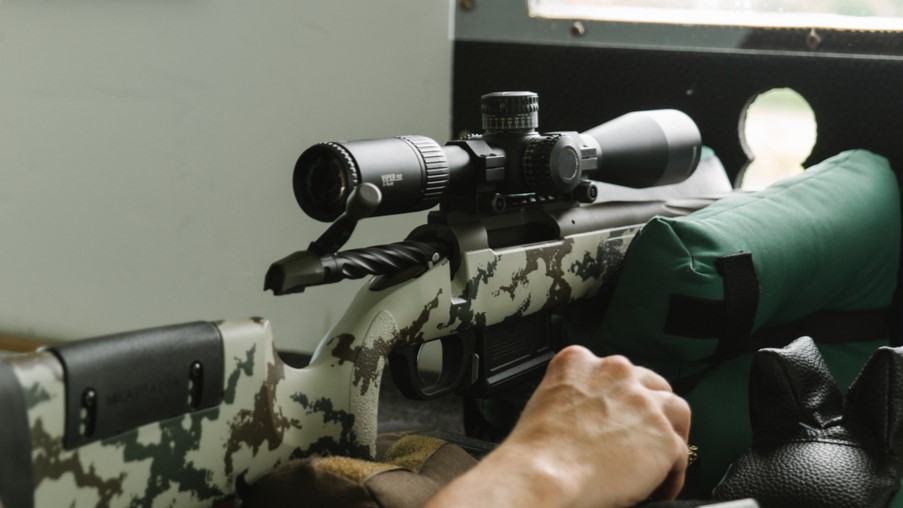
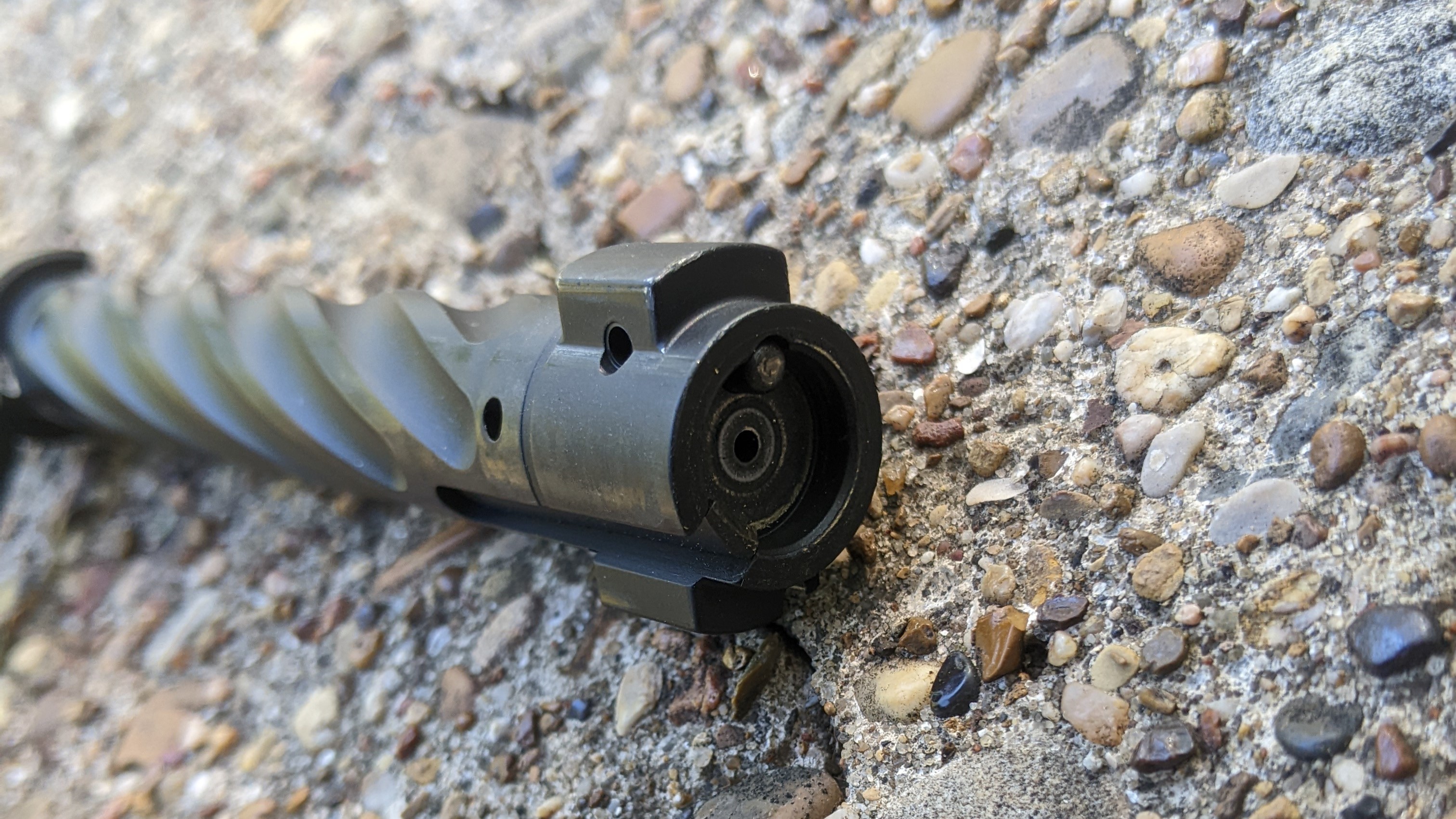
None of these quibbles are deal breakers. If you want a sweet hunting rifle with a no-frills stock and a rock-solid action, the Weatherby 307 MeatEater Edition is for you. But every rifle comes with tradeoffs, and you should know about those tradeoffs before getting out your wallet.
First Impressions
The Model 307 is a well-balanced rifle–in more ways than one. The barrel/stock combination keeps the rifle from being too front heavy, and I immediately noticed how well the gun shoulders and points (to borrow a phrase from the shotgunning world).
The rifle’s overall weight also falls in a sweet spot between lightweight “mountain rifles” and heavier competition setups. The 6.5 Creedmoor model I received weighs a hair over eight pounds with a Leupold scope attached. That’s heavy enough to absorb some recoil but not too heavy to carry around all day.
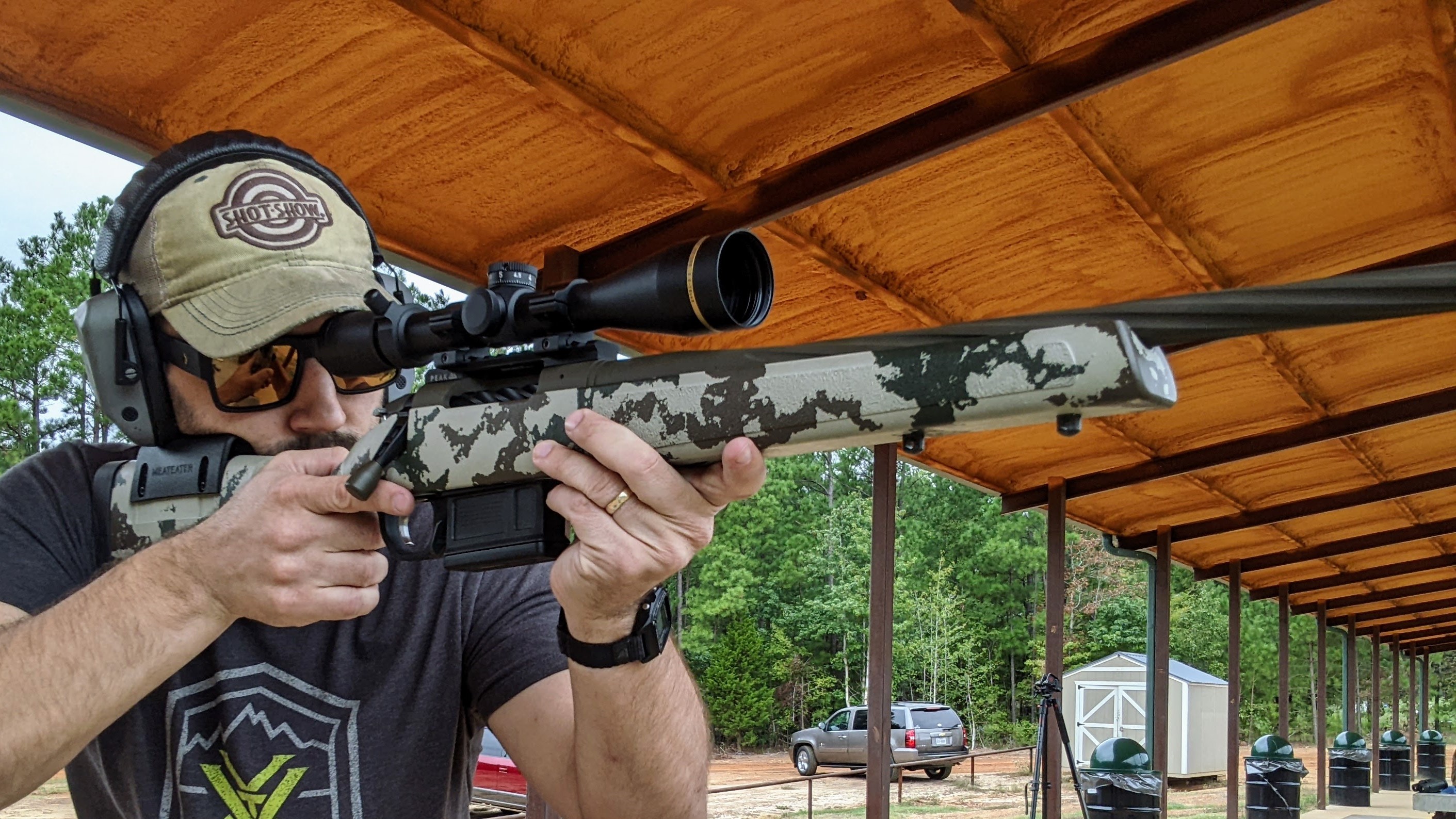
The rifle’s balance and weight is due in part to the barrel length. The 22-inch barrel is long enough to burn most of the Creedmoor’s powder, but it’s also short enough to keep the rifle a handy 41.5 inches overall. A 22-inch barrel is also short enough that a suppressor won’t be too cumbersome hanging off the end.
Once you’re aiming at what you want to hit, the trigger will help seal the deal. I’m a sucker for a good trigger, and this TriggerTech Field model is excellent. It’s externally adjustable from 2.5 to 5 pounds (meaning you can adjust the weight without taking the action out of the stock), and the one I received clocks in at 3.25 pounds. The trigger is crisp without any grittiness or mushiness, and more importantly, it’s consistent. I ran it through my trigger weight gauge over and over, and every time it hit 3.25 pounds.
At the Range
Colonel Townsend Whelen famously said that “only accurate rifles are interesting.” I’ve never really agreed with this sentiment (I’m fascinated by weird guns that are definitely not accurate), but I understand where he’s coming from. Only accurate rifles can hit a target consistently, which, for gun hunters, is the beginning and end of the story. Nothing else really matters.
The problem is that the way hunting rifles have historically been tested for accuracy doesn’t make much sense. A hunting rifle has to be able to land a single shot (maybe two) from a cold barrel. Shooting a series of three- or five-shot groups and then averaging those groups doesn’t tell me much about how the rifle will perform in an actual hunting situation.
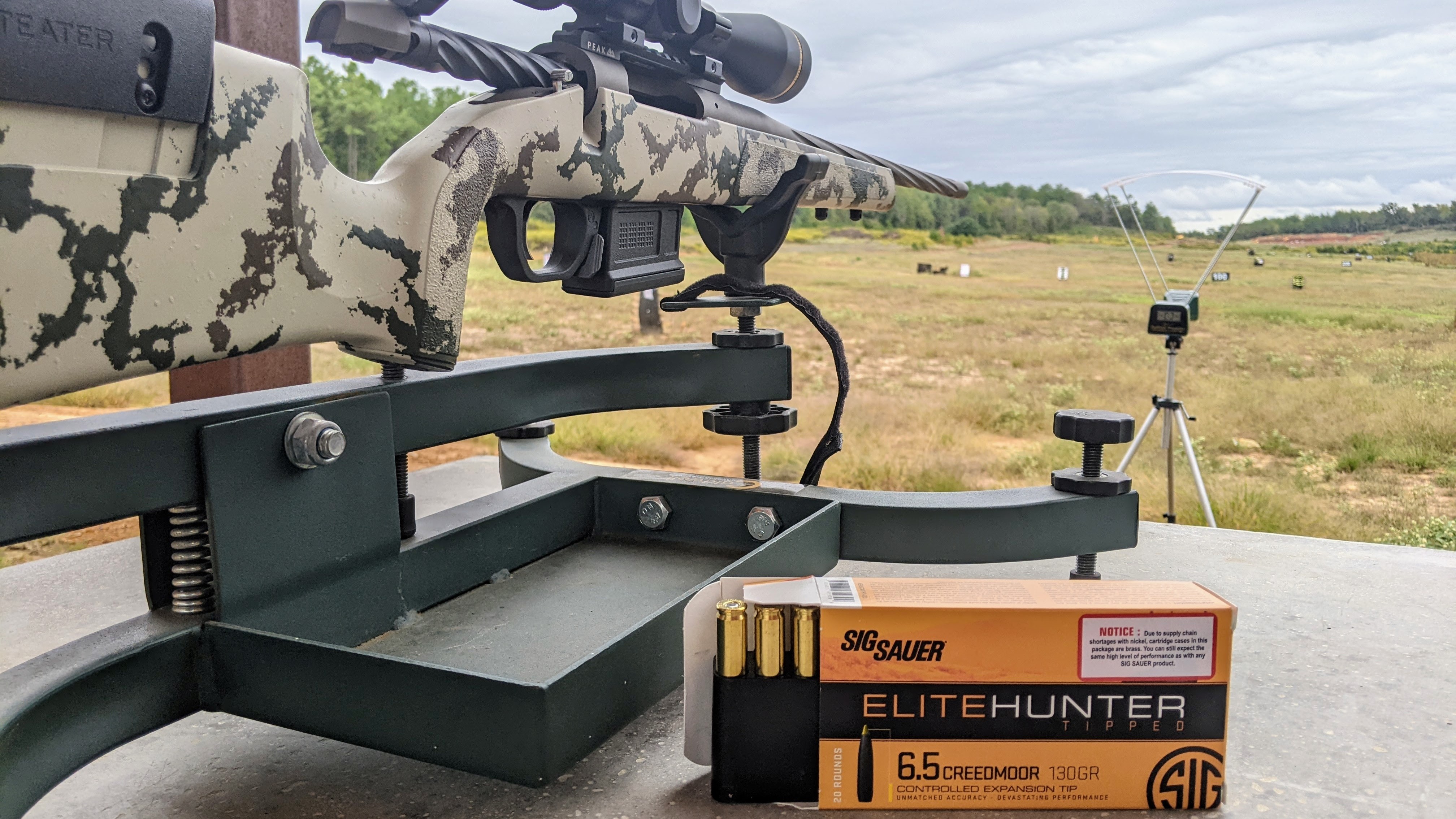
So, to approximate the real world as closely as possible, I tested the Weatherby 307 MeatEater Edition from a cold barrel. I shot ten shots at a bullseye using four different kinds of Sig Sauer ammunition, and I used those ten-shot groups to compare the accuracy between the different bullet weights and styles.
The overall group sizes are larger than what you might be used to seeing. Most rifles can post a sub-MOA three- or five-shot group (which lowers the overall average), and groups often shrink when a barrel heats up a bit. (Cal reports 0.75-inch three-shot groups when he’s done his own accuracy testing.)
But that’s not how you use a rifle in the field. If you took this rifle out ten times and made ten shots on a cold barrel, how consistent would it be? Here are the results:
| Bullet | Avg. Velocity (fps) | Standard Deviation (fps) | Group Size (in) |
| 140g OTM | 2722 | 9 | 1.9 |
| 129g SP | 2746 | 10 | 2.1 |
| 130g ET | 2805 | 24 | 1.5 |
| 140g Accubond | 2647 | 9 | 1.8 |
All shots taken at 100 yards using a Lead Sled.
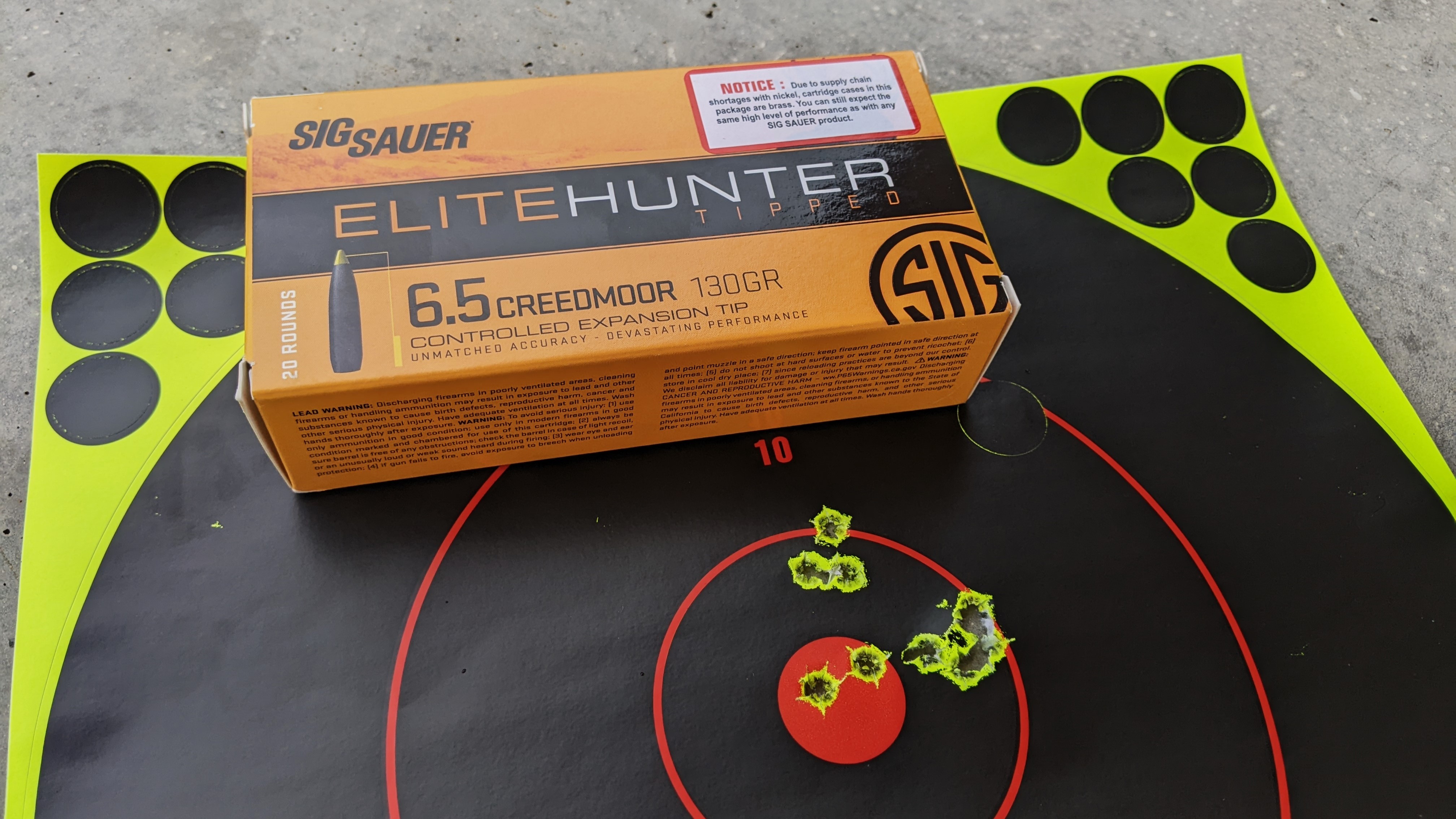
As you can see, the 130-grain Controlled Expansion Tip bullets in Sig Sauer’s EliteSeries performed most consistently. If I adjust my scope to center the point of impact on the bullseye, I’d have no trouble hitting the vital area of an animal even beyond distances most hunters are comfortable shooting.
Need a second opinion? When Cal went out to Weatherby’s headquarters in Sheridan, Wyoming, to take the new MeatEater Edition rifle for a spin, he had the rifle ringing steel all the way out to 1,000 yards. And he didn’t need ten shots to get on target. After hitting targets at 700, 800, and 900 yards, he nailed the 1000-yard target on his first try. You can hear more about that on this episode of On Our Mark.
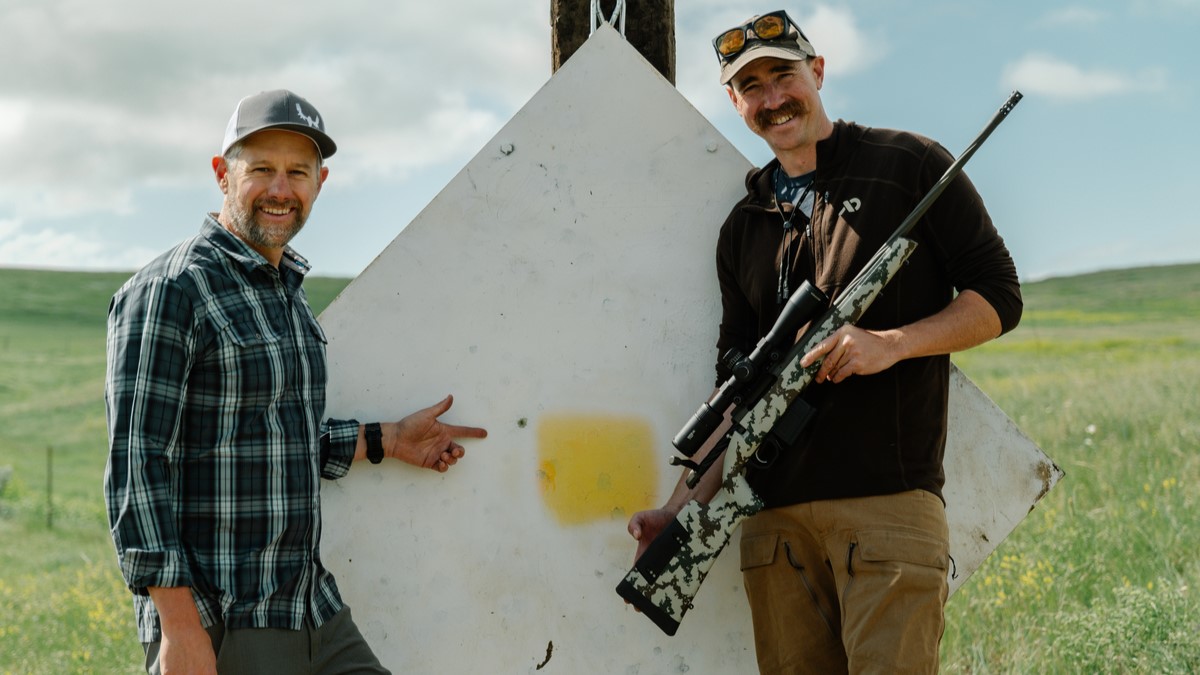
Last Shot
We’re partial to this rifle, but we think we have reason to be. It’s loaded with features, performs well at the range, and lives in that sweet spot of weight and length that all hunting rifles seek to achieve.
It may not be the perfect rifle for every hunter or sport shooter, but that’s the great thing about the 307 platform. If there’s something you don’t like, it’s easy to swap out parts to make the perfect rifle for yourself.
Addendum
Some of you asked in the comments to report on the best three-shot groups the rifle posted with each type of ammunition. I've gone to the range on far weaker excuses, so I took the 307 back out over the weekend. These groups were all shot in succession from 100 yards with a few minutes between each group to allow the barrel to cool (somewhat).

As you can see, Weatherby delivers on its sub-MOA guarantee.
| Bullet | Group Size (in) |
| 140g OTM | 0.47 |
| 129g SP | 0.44 |
| 130g ET | 0.40 |
| 140g AB | 0.47 |
I didn't shoot enough groups with each type of ammo to determine which is the best, but four three-shot groups is plenty to say that this rifle is a shooter by traditional measures.
It also highlights how tough it can be for a rifle to put down 10 cold-bore shots in the same small space. In my experience, a rifle shoots its best groups after it's had three or four rounds down the barrel (which this gun had before I started these groups). I can't say for sure whether this is due to barrel temperature, fouling, or some other black magic. But since hunters don't have the luxury of firing off a few shots before taking a shot on an animal, the cold-bore test is a better indicator of what the rifle is going to do in the field.




